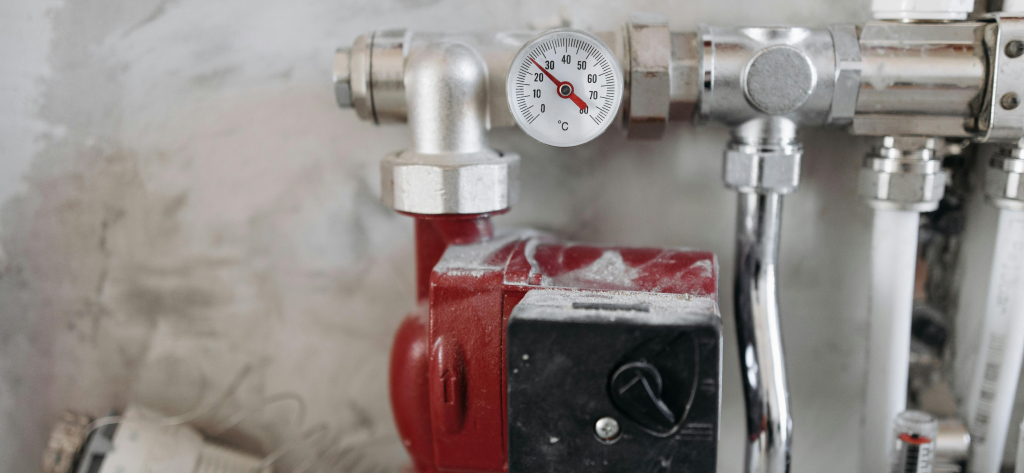Article
Can Solar Power My Well Pump, Sump Pump, or Other Heavy Loads?

Embracing solar power for your well pumps, sump pumps, and other heavy loads is not just smart, it’s a sustainable choice for any homeowner. Making this switch can provide a dependable water supply, manage excess water effectively, and showcase your commitment to protecting our environment.
With the right knowledge, you can create a solar system that not only meets your specific needs but also boosts your energy independence. This guide walks you through important topics like surge currents, inverter sizing, and battery importance. We’re here to help you understand solar energy for these vital applications so you can feel confident making informed decisions.
Investing in solar power isn’t just about upgrading your equipment; it’s a bold step toward a greener future. Knowing your system’s components is key to maximizing both its performance and lifespan. So, let’s dive in and explore how to efficiently harness solar energy for your well, sump, and other heavy loads.
Understanding Surge Currents and Their Impact on Pumps
Surge currents are the initial bursts of power needed to start pumps, and they can be significantly higher than the power needed for continuous operation. For example, a pump that usually consumes 370 watts might need several times that amount when it first kicks on. If you don’t account for these surges in your solar design, things might get complicated.
Here are a few key points to keep in mind about surge currents:
- Initial Power Demand: Starting your pump can draw several times its normal wattage, so be prepared for that spike!
- Inverter Surge Rating: When picking an inverter, make sure it can handle those temporary power surges without causing trouble for your system.
Larger pumps generally need inverters with beefier surge capacities. For instance, a 2 HP pump typically requires an inverter with a surge capacity of at least 6000W. By taking these factors into account, you can have smooth sailing with your solar setup.
Sizing Inverters for Heavy Loads: What You Need to Know
Finding the right inverter for your well pumps is crucial for keeping things running smoothly. You’ll want to familiarize yourself with both continuous and surge power ratings. The continuous power rating tells you how much power the inverter can deliver consistently, while the surge rating indicates how much it can handle during those startup spikes.
Keep these points in mind as you choose an inverter:
- Capacity Matching: A 1000W inverter can handle a small pump, like a 0.5 HP model, but you’ll need something sturdier for larger pumps.
- General Guidelines: A 2 HP pump usually requires inverters with continuous ratings of at least 4000W for optimal operation.
By aligning your inverter’s capabilities with your pump’s needs, you’ll ensure a reliable solar-powered pumping system that meets the demands of your garden or ranch.
When Are Batteries Required for Solar Pump Systems?
Batteries are a game changer for solar pump systems, especially when sunlight isn’t always available. By installing batteries, you allow your pumps to keep working during low-sunlight periods, like nighttime. Plus, you can store any extra energy generated during sunny hours for later use.
As you consider incorporating batteries into your solar system, think about:
- Energy Storage: Residential battery capacities can range from 2.4kWh to 15kWh, so you can choose what fits your needs best.
- Operational Continuity: Batteries ensure your pump keeps running even when the sun is not shining.
Choosing the right battery depends on your specific energy needs, making it vital to estimate your usage based on your pump’s operation schedule. This foresight will make your system more efficient and ready for whatever energy demands come your way.
Best Practices for Sizing Solar Panel Systems for Well Pumps
Building an effective solar panel system for your well pump starts with an accurate understanding of your energy needs based on pump specs. Various factors affect how much energy you’ll need:
- Pump Wattage: Knowing the specific power consumption of your pump is your first step.
- Runtime and Sunlight Availability: Take into account how long the pump runs and how much sunlight you get. Seasonal fluctuations can significantly impact energy production, so make sure you factor those in, too.
Aim to match your solar panel system’s output with your load requirements. Plus, exciting advancements in solar technology are expected to push panel outputs over 700W by 2025, which means your solar solutions are only going to get better. Staying up-to-date with these trends can really work to your advantage.
What Types of Loads Can Be Powered by Solar Energy?
Solar energy is quite adaptable and can power a variety of heavy appliances beyond just well pumps. Here are a few more options:
- Sump Pumps: Keep drainage efficient and tackle excess water issues head-on.
- Heating Systems: Solar can power water heaters, helping ease those energy bills.
- Irrigation Systems: Ensure your garden stays lush and green using energy-efficient solutions.
Understanding the energy requirements of each application is key, as smart load management plays a big role in how well your system performs.
How Do I Calculate the Surge Current for My Well Pump?
Figuring out the surge current for your well pump is pretty straightforward. Start by checking out the specs from the pump manufacturer; you’ll typically find both continuous and surge (starting) power requirements listed there. This info is crucial for figuring out the right inverter size to accommodate the surge.
Here’s how to get accurate calculations:
- Specification Review: Look through the pump’s technical documents for power requirements.
- Use Measurement Tools: Clamp meters can give you real-time data on current usage, helping fine-tune your calculations.
By following these steps, you can find the perfect inverter to take on the demands of your well pump without breaking a sweat.
What Specifications Should I Look for in a Solar Inverter?
When choosing a solar inverter for your pump systems, keep an eye on a few key specifications:
- Continuous Power Rating: This shows how much power the inverter can continuously provide.
- Surge Capacity: This will tell you if the inverter can handle peak loads during startup.
- Efficiency: Look for efficiency ratings to see how well the inverter converts energy during operation.
With recent advancements in solar inverter technology, you’ll find improvements in efficiency and adaptability to various load scenarios. By focusing on these important specifications, you’re setting yourself up for success both now and in the future.
Wrapping Up
Switching to solar power for your well pumps, sump pumps, and other heavy loads offers not just energy independence, but it can lead to serious savings in the long run. By understanding important aspects like surge ratings, inverter sizing, and battery needs, you can design a system that works efficiently for you year-round.
With continuous improvements in solar technology and a growing consciousness of renewable energy solutions, homeowners today can make educated choices that benefit both their wallets and the planet. As you embark on this journey, consider reaching out to experts like Solar Energy World for personalized advice and to discover high-quality solar products to guide you smoothly through your solar energy transition.
FAQ
Can solar power work effectively for other heavy appliances?
Absolutely! Plenty of heavy appliances, like water heaters and air conditioners, can run on solar energy with the right design and sizing.
What is the average lifespan of solar panels and batteries for pump systems?
Usually, solar panels can last for 25 years or more, while batteries generally have a lifespan of 5 to 15 years, depending on how they’re used and their type.
Are there incentives available for using solar energy for pump systems?
Yes, many states offer incentives, tax credits, or rebates for homeowners who install solar systems, making the switch more budget-friendly.
How do I maintain my solar-powered pump system for optimal performance?
Routine maintenance is key! This includes cleaning your panels, checking battery health, and ensuring all connections are secure. These practices help you get the most out of your system.
What advancements are being made in solar technology for heavy loads?
The solar industry is exciting, with trends toward higher-efficiency panels, better energy storage solutions, and smarter inverter technologies that can adjust to changing loads.
Want a Free Solar Estimate?
Fill out the form to get started today.


